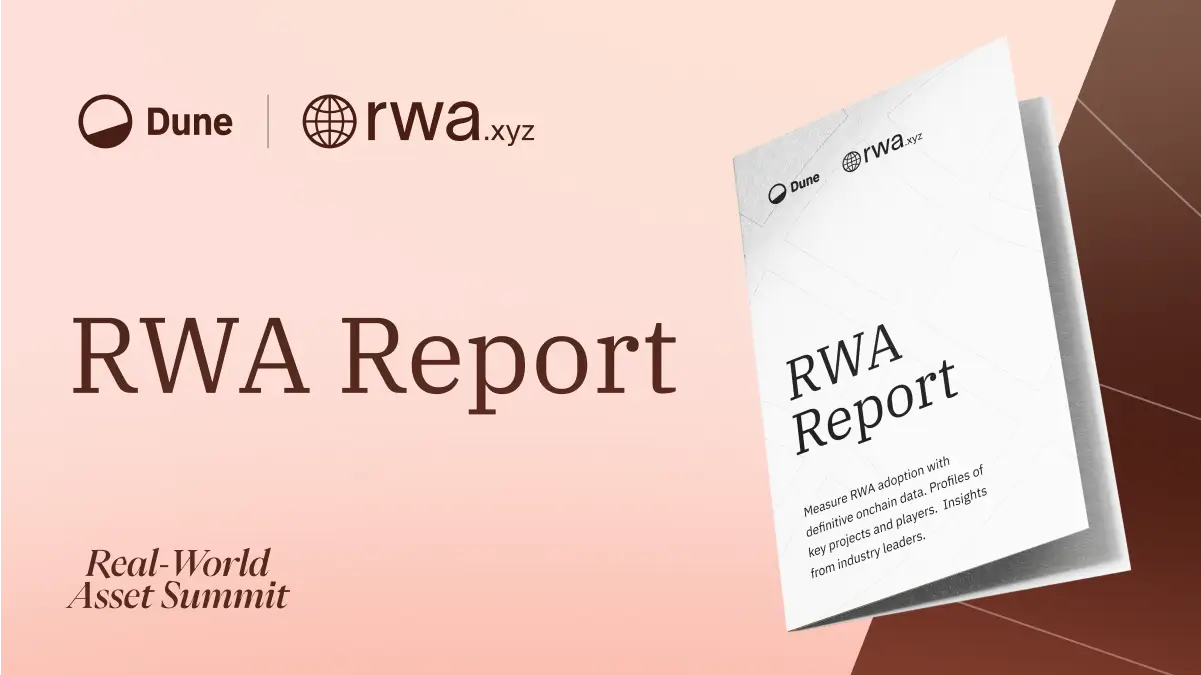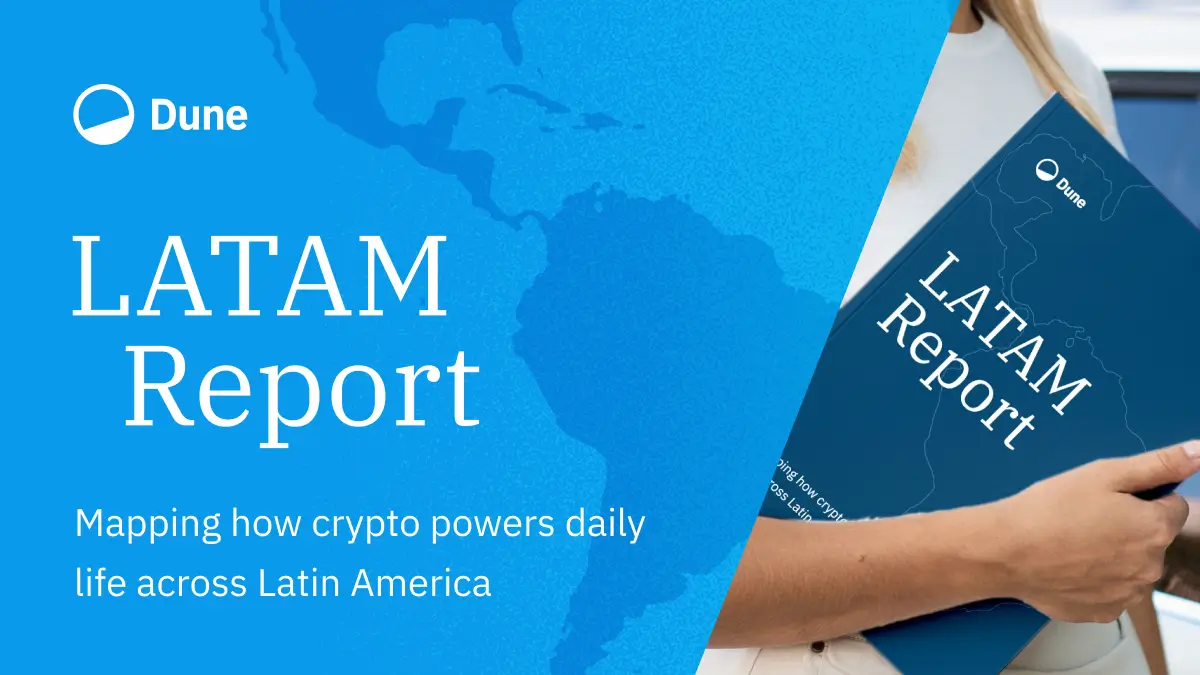The Rise of Real World Assets (RWAs) on Blockchain: A New Era of Accessible Data
Learn how Dune makes RWA assets transparent and accessible.
Exclusive content

Download Content



The Origins of Real World Assets (RWAs)
Blockchain technology is bringing real-world assets (RWAs) online, with $5.29 billion currently tokenized across categories like real estate, commodities, and stocks. When including stablecoins, this figure leaps to $174 billion. Imagine a future where the physical assets we know—properties, commodities, and even collectibles—are fully tradeable on-chain, unlocking opportunities traditionally limited to the largest financial institutions.
Much like the journey of the stock market since the Dow Jones launched in 1896, the trading landscape continues to evolve with each new technology. From pencil-and-paper calculations to electronic trading in 1971, and the SEC’s approval of the first electronic trading systems in 1998, each step has reshaped how we trade. RWAs represent the latest technological leap: bringing physical assets into a transparent, digital format on blockchain.

So why should we be excited about RWAs?
It’s not just about the money flowing into the ecosystem. This shift is about transforming how we view asset ownership and trading strategies - making it transparent and fully queryable in ways we’ve never seen before.
Enter Dune.
Dune’s Role in the RWA Market
Blockchains offer transparency, but raw data can be challenging to decipher. This is where Dune’s platform, powered by data analysts, comes in. Dune transforms blockchain data into meaningful insights, allowing users to track historical transactions, analyze on-chain activity, and identify patterns that can influence future strategies.
For RWAs this is a game-changer.
Let’s take a look at the best dashboard I found, created by @nifty0x - with parts built on top of dashboards from @impossible_finance, @fillif, @sqrr-research and the @21co Research team - Eli, Adrian, Karim, Carlos and Tom.This dashboard breaks RWAs down into six sections:
- Total Tokenized Value by Type of Asset
- Total Tokenized Value by Blockchain
- Total Tokenized Value by Project
- Breakdown by Type of Asset
- Real World Asset Loans
- BlackRock USD Institutional Digital Liquidity Fund (BUIDL)
Each section offers key insights. The first four sections help you identify the main players, the amount of money involved, and the general landscape of RWAs. These visuals give you a snapshot of what’s happening and where opportunities may lie.
For example, the Total Tokenized Value by Type of Asset chart gives you a feel for the market size, where attention is focused, and where the potential exists. You can use these visuals to guide your research strategy or to zero in on specific assets or sectors.
Moving deeper, the dashboard highlights projects and companies active in the RWA space. This helps you see who’s attracting the most interest, whether it’s users, money, or attention from industry players.

From here, you can take your own deep dive. Explore the queries, see how they pull data, verify sources, or even build on these insights with forking your own custom queries.
The dashboard also explores on-chain loans—yet another layer of complexity. Dune lets you dive in, explore the data, and find unique angles that others haven’t considered yet or strengthen the angles you already have in mind.


Finally, the focus shifts to an example using BlackRock’s BUIDL. For those unfamiliar, BUIDL is BlackRock’s first tokenized fund.
The beauty of on-chain data is that we can analyze these funds in ways that were never possible this easily before to the public.


How can you leverage Dune for your own RWA insights?
Investors
- Custom Dashboards & Alerts: Create personalized dashboards that track market trends and transactional data, helping you stay ahead.
- Narrative Analysis: Follow investor flows and key movements across projects, enabling a better grasp on high-potential assets.
Builders
- Get a better grasp of the market and your competition by building private investigative dashboards - or share them publicly to set the narrative.
- Identify what strategies generate the most revenue and learn from them.

Reporters
Boost your credibility by backing your reports with Dune data.
- Track wallets linked to key figures in the space for deeper insights.
- Use pre-built dashboards for a quick overview of the wallets and projects you’re covering.
- Double-check your on-chain facts using Dune to ensure accuracy.
Regulators
Monitor on-chain activity to follow where and how money moves, and verify if it matches existing reports.
- Craft smarter regulations by aligning them with real human behavior.
- Identify unsafe areas in the market and take action backed by Dune’s on-chain data.

Top RWA project dashboards on Dune
- dune.com/j1002/rwa-narrative
- dune.com/katxtong/rwa-dashboard
- dune.com/impossiblefinance/rwa-lending-landscape
- dune.com/sqrr-research/blackrock-usd-institutional-digital-liquidity-fund-buidl
- dune.com/lindyhan/ondo-usdy-ousg
- dune.com/florencefinance/arbitrum
- dune.com/klimadao/klima
Summary
The RWA market has the potential to reshape finance. Whether growth is slow and steady or rapid, RWAs are here to stay, and it’s crucial to prepare. Dune’s platform empowers users to make informed decisions, making previously inaccessible financial insights available to everyone.
So what can you do now? Get comfortable with Dune, or bring data analysts into your team. This is the future, and demand for data always catches up.
Thank you for reading.
About Me
I'm a Web3 analyst with experience in business development and strategy for a blockchain AI tool, as well as community building. I now focus on leveraging data analytics through Dune to drive insights in the Web3 space, using my background to better understand consumer behavior, especially among non-tech users. If you have any questions regarding this article, feel free to reach out to me on @yotamha1.
Key Resources:
RWA rwa.xyz dashboard - rwa.xyz/blog
RWA Dune dashboard - dune.com/nifty0x/rwa
Wikipedia - wikipedia.org/wiki/Derivative_(finance)
WSJ - wsj.com/graphics/history-of-trading/
This article was created by Dune community Wizard, @yotamha1. The views and opinions expressed in this article are solely those of the author(s) and do not necessarily reflect the official position of Dune.
If you would like to contribute to Dune blog, please contact alsie@dune.com.
Ready to bring your Blockchain to Dune?
Power your App with Dune data
Steam Dune data in your analytics environment

Want to join Dune?


Dune Datashare
Ready to get started?
Individuals + Small Teams

Enterprise






